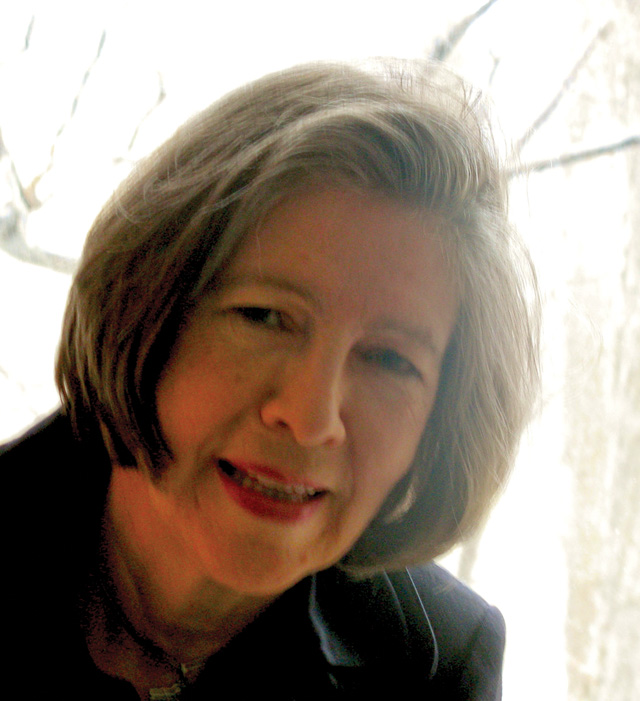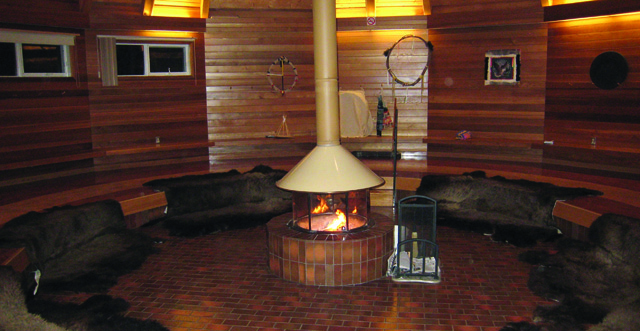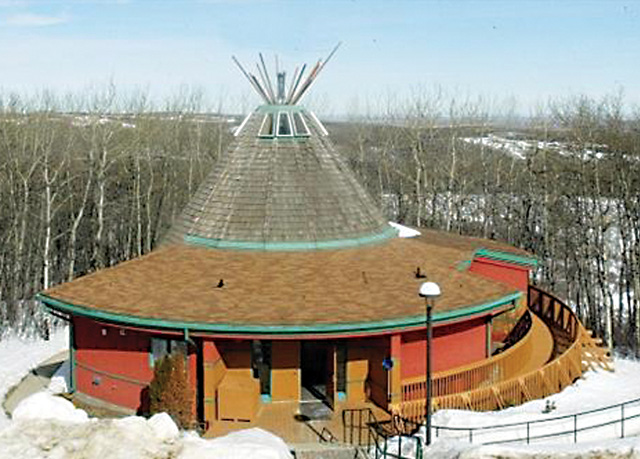A time of healing
Accompanying incarcerated Aboriginal women in Canada
By Mary Sanderson
May/June 2012
Return to Table of Contents
Print Article
I came to art therapy relatively late in life. After working in administrative roles for many years, I enrolled at the Toronto Art Therapy Institute as a mature student and chose to do my internship at the Canadian Centre for Victims of Torture, working with refugees. My thesis, “Beyond Torture: Art as Healing,” was the first attempt to chronicle the use of art to enable victims of state torture to heal.
Fifteen years later I had an opportunity to use this training and experience with First Nations people. For the last three years I have had the privilege of working with incar-cerated Aboriginal women at the Okimaw Ohci Healing Lodge in Southwest Saskatchewan. Our Lady’s Missionaries, who have given me so much support, introduced me to the Donner Foundation of Canada and the Basilian Fathers whose grants enable me to do this work.
The Okimaw Ohci Healing Lodge is a minimum/medium security federal penitentiary built in 1995 on the Nekaneet First Nation in the Cypress Hills. The facility houses 44 women who are serving time for crimes such as murder, manslaughter, armed robbery, aggravated assault, arson and, the most common, drug trafficking. Native women make up three percent of the Canadian population but 33 percent of the female prison population— an increase of 151 percent in the last decade.
In the heart of the Healing Lodge is the Spiritual Lodge, built in the form of a teepee. A fire burns in the centre, surrounded by benches covered with bison robes. Every weekday morning the community gathers there. A smudge of sage is passed around and each woman shares how she is feeling. Many return during the day for prayer and meditation. At night some of the women gather with me around the fire. They bring their pillows and lie on the bison robes as I read Aboriginal short stories to them.
As an art therapist I encourage the women to paint, draw, or work in clay. Their art depicts lives of unspeakable suffering that has often been the result of alcohol and drug abuse. One woman painted herself as a butterfly, prevented from flying by a black cord held by a hand that she admitted was her own. From the age of 10 she took care of her six siblings because her parents were addicted to alcohol. At 13 and 22 she was raped. She later killed her abusive husband who had twice knocked her
For many years her heart yearned for healing and forgiveness. Just before she was released to a halfway house in Winnipeg, she made a beautiful Monarch butterfly out of clay, a self portrait. She had at last forgiven herself.
I find myself deeply moved by these women. They teach me a basic Christian value—grace. In the face of great loss, extreme grief and, in many cases, overwhelming guilt, they live their lives in search of forgiveness and with an irrepressible love of life. These women are an inspiration to me.
Return to Table of Contents
Print Article


